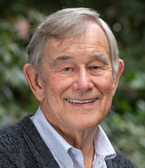In the late 1990s, three privately-funded school voucher programs for students from low-income families were established in the Dayton, Ohio metropolitan area, New York City, and Washington, D. C. The New York City program, sponsored by the School Choice Scholarships Foundation (SCSF), was announced in the fall of 1996; students receiving vouchers entered private schools in the fall of 1997. Two additional programs were created one year later, one in the Dayton metropolitan area, sponsored by Parents Advancing Choice in Education (PACE), and one in D.
Choice
In early 1998 the Parents Advancing Choice in Education (PACE ) program offered low-income families an opportunity to win scholarships to send their children to private schools in Dayton and other parts of Montgomery County, Ohio. Students entering kindergarten through twelfth grade qualified. PACE offered scholarships to 515 students who were in public schools and 250 students who were already enrolled in private schools. The program began in September of 1998. This evaluation examines the program’s impact on those students in grades 2-8 who had previously been attending public schools.
In the fall of 1997 the Washington Scholarship Fund announced the expansion of a previously establishment, privately-funded school voucher program in Washington, D.C originally established in 1993. In the spring of 1998, over six thousand students from public and private schools applied to the new program; of these initial applicants, over one thousand were offered scholarships.
In the past decade much more has become known about the impacts of school vouchers on low-income families and their children. Ten years ago, the information available came primarily from an experimental public-school choice program attempted in Alum Rock, California during the 1960s But beginning in 1990 data were collected on voucher programs in many cities, including Milwaukee, Cleveland, Indianapolis, San Antonio, New York City, Washington, and Dayton, Ohio. Initially, many of these studies were limited by the quality of the data or the research procedures employed.
In 1996 the Cleveland Scholarship Program (CSP) provided scholarships to 1,996 students in grades kindergarten through grade three who came from low-income families. Students could use these scholarships at any participating Cleveland private school, secular or religious. The program continued into the 1996-97 and 1997-98 school years. Approximately 3,000 students participated in the program in its second year and 3,674 students in the third year. This evaluation reports the results from a survey undertaken during the summer and fall of 1998.
Evaluated the success of the publicly funded school-voucher program in Milwaukee (Wisconsin) using data for 592 students. The Milwaukee experience suggests that privatization in education may result in efficiency gains. Given a choice between public and private schools, Milwaukee parents chose the option best suited for their children. Discusses reasons for program success.
The issue of education vouchers has become a new Gettysburg for America in the closing years of the twentieth century--and promises to continue to be a blood-soaked civil war battlefield in the new millennium.
